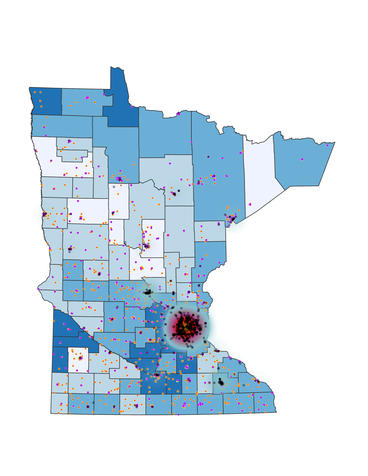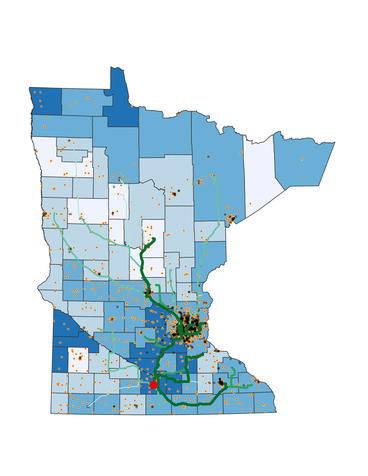Industry Clusters
According to Harvard Business School professor Michael Porter, industry clusters are critical masses— in one place—of unusual competitive success in a particular field.1 Clusters explain why the immediate business environment outside companies—not just what happens inside—plays a vital role, with both contributing to create competitive advantage. Further, clusters play a fundamental role in driving regional economic competitiveness by encouraging higher rates of job growth, wage growth, new business formation, and innovation in the regions they are located in.
A cluster’s boundaries are defined by the linkages and complementarities across industries and institutions that are most important to competition. Because clusters capture these important linkages and the potential spillovers of technology, skills, and information, they make a better lens for viewing economies rather than specific types of companies, industries, or sectors.
Medical Device Industry Cluster
In this study, researchers analyzed the distribution of the medical device industry cluster in Minnesota, including the supply flows and transportation usage of medical device companies and their linked industries. A key measure for assessing the relative impact of industry clusters is through a location quotient (LQ), which assesses the relative concentration of an industry cluster. A score of 1 equals the national average, and any score above that demarks above-average concentration.

Figure 1a shows the LQ of the Minnesota medical device industry cluster by county. The darker the blue, the higher concentration of medical device related imports and exports that county has compared with the overall federal average.

Figure 1b shows the spatial location and density of all medical device and linked companies in the state. These linked companies are connected to the core medical device manufacturing companies by supplying plastics, lighting, biopharma, production technology, IT, and metals manufacturing. Figure 1c shows the export paths of medical device products from Blue Earth County, highlighting the importance of the surface transportation system in the state.

“The locational pattern of medical device and linked industries confirms that this industry cluster is an important contributor to the state’s economy, and not just in the Twin Cities but in Greater Minnesota as well,” notes Tom Horan, dean of the School of Business at the University of Redlands and visiting scholar with the U of M’s Humphrey School of Public Affairs.
1 Porter, Michael E. "Clusters and the New Economics of Competition." Harvard Business Review 76, no. 6 (November–December 1998): 77–90.